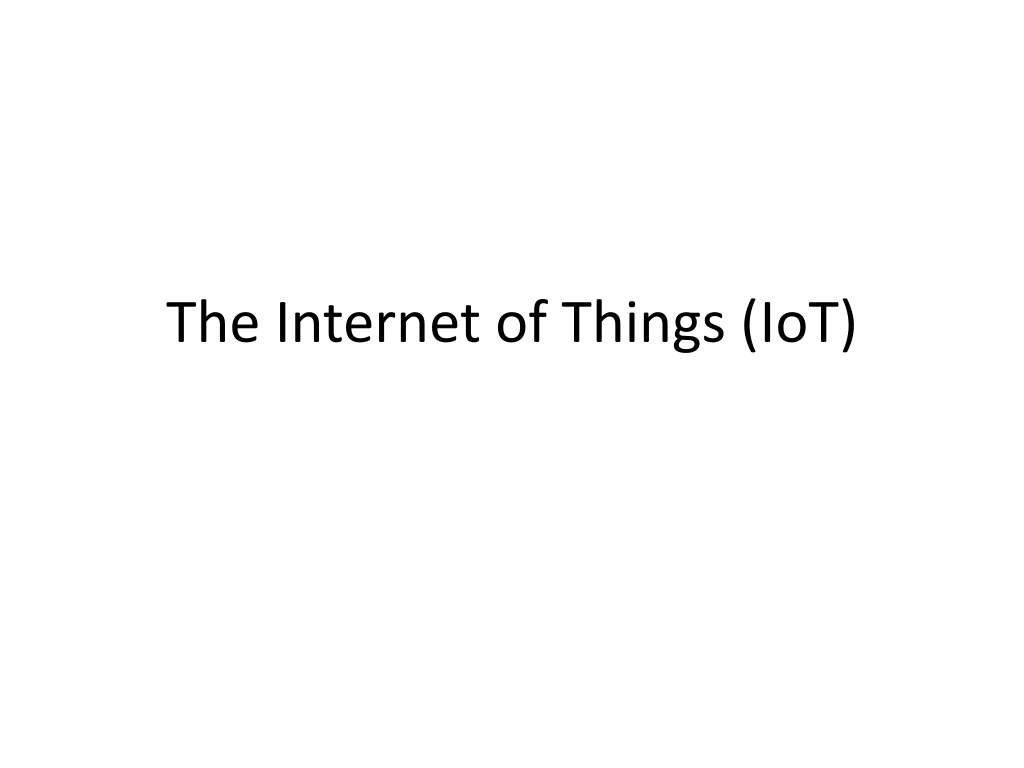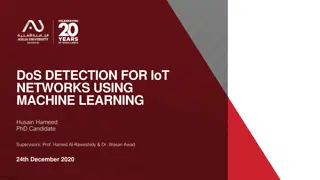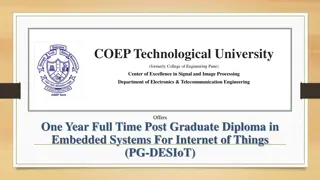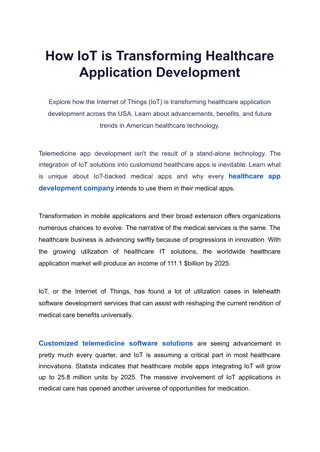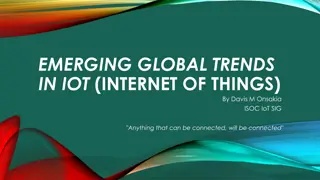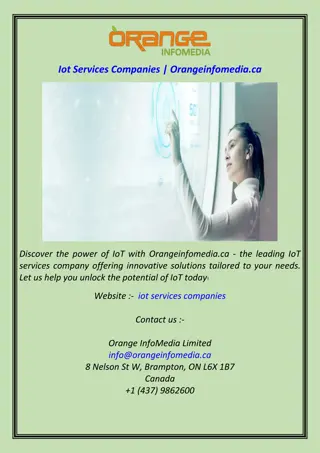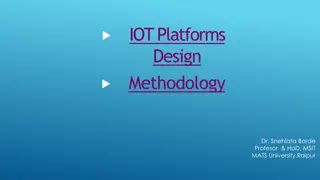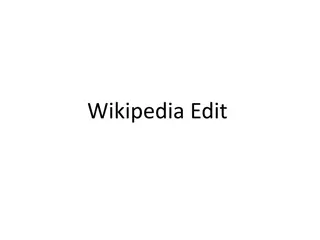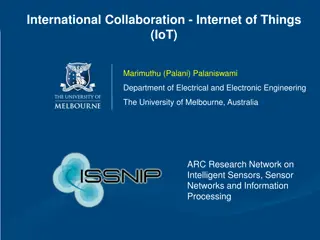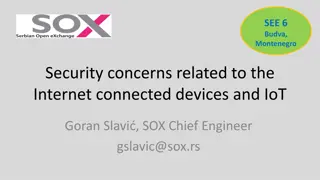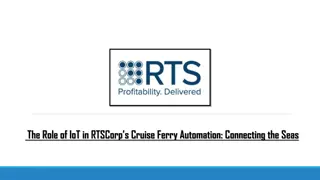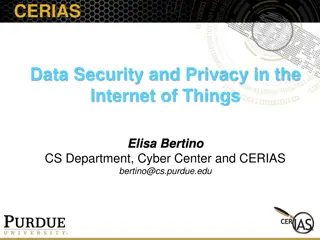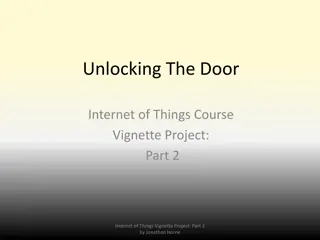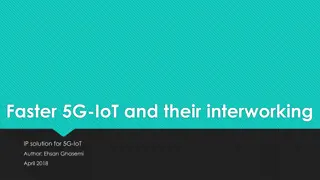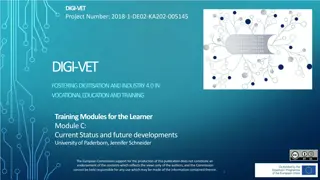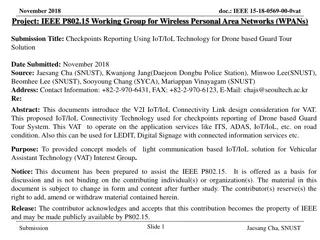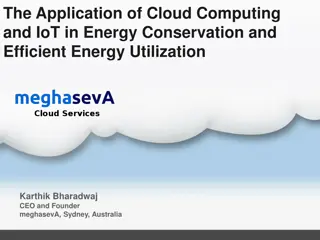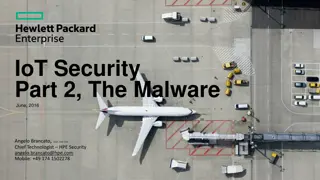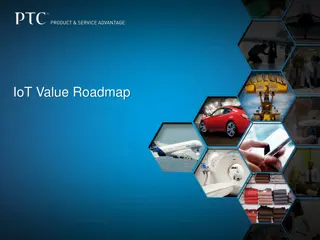Understanding the Internet of Things (IoT) and Its Applications
The Internet of Things (IoT) refers to a network connecting objects wirelessly, enabling new forms of communication. Predictions indicate a significant growth in connected devices. IoT applications in shopping and healthcare showcase innovative technologies for enhanced efficiency and improved services.
Download Presentation

Please find below an Image/Link to download the presentation.
The content on the website is provided AS IS for your information and personal use only. It may not be sold, licensed, or shared on other websites without obtaining consent from the author. Download presentation by click this link. If you encounter any issues during the download, it is possible that the publisher has removed the file from their server.
E N D
Presentation Transcript
What is the Internet of Things? Definition (1) The Internet of Things, also called The Internet of Objects, refers to a wireless network between objects, usually the network will be wireless and self- configuring, such as household appliances. ------Wikipedia (2) By embedding short-range mobile transceivers into a wide array of additional gadgets and everyday items, enabling new forms of communication between people and things, and between things themselves. ------World Summit on the Information Society 2005
What is the Internet of Things? continued Definition (3) The term "Internet of Things" has come to describe a number of technologies and research disciplines that enable the Internet to reach out into the real world of physical objects. ------IoT 2008 (4) Things having identities and virtual personalities operating in smart spaces using intelligent interfaces to connect and communicate within social, environmental, and user contexts . -------IoT in 2020
Predictions for The Internet of Things According to Gartner there will be nearly 26 billion devices on the Internet of Things by 2020 According to ABI Research more than 30 billion devices will be wirelessly connected to the Internet of Things (Internet of Everything) by 2020 Cisco created a dynamic "connections counter" to track the estimated number of connected things from July 2013 until July 2020
The Application of IoT: Shopping (2) When shopping in the market, the products will introduce themselves. (1) When entering the doors, scanners will identify the tags on her clothing. (4) When paying for the products, the microchip in the credit card will communicate with checkout reader. (3) When selling the products, the reader will tell the staff to restock the item.
The Application of IoT: Health Care New efficient diagnostics combined with nanotechnology enabled lab-on-a-chip technologies open a complete range of novel opportunities for new treatments and prevention of serious diseases. In-vivo equipment will assist in drug dosage closer to the affected organs thus reducing the amount of reagents needed and diminish the risk of adverse effects. Several serious common illnesses such as breast cancer, cardio- vascular diseases and Alzheimer's disease have genetic components. It is also known that successful treatment depends on early detection.
The Application of IoT: Health Care - continued Biodegradable materials will offer the possibility to place temporary sensors and lab-on-a-chip equipment on the patient, or in the patient. Temperature and humidity can be measured inside a cast to prevent skin problems. Antigens may be detected on transplanted organs to help prevent rejection. Intelligent micro-robots may be guided to bring drugs to the infected areas by ex-vivo remote guidance, and assist in the diagnosis providing located measurements of vital parameters. This new type of personal medical equipment will enable the patient to stay longer and more safely at home since the equipment itself can alarm the hospital in case of critical situations The patient can be relieved from the annoyance of routine checks when there is nothing wrong. Medical research will advance on data from patients living normal lives- not like guinea pigs in hospitals. Telemedicine may replace costly travel and reduce patient stress.
The Application of IoT: Intelligent Home Maintaining a comfortable temperature and heating water are the most energy consuming tasks in the house with huge potentials for energy conservation, and as a consequence a significant positive impact on the environment. These activities will be controlled autonomously by house sensors There will be robots taking care of the house, performing routine works such as cleaning or maintenance. These will collaborate autonomously with the house sensors, and the house control. The intelligent appliances will collaborate to conserve energy, and signal need for new supplies of food, detergents, maintenance, etc. Some of which may be satisfied automatically by the maintenance robot. This will eliminate some of today s tedious housekeeping activities.
The Application of IoT: Transportation When there is a logjam, the first cars may tell the cars behind that there is an accident or just too much traffic. This will eventually make intelligent navigation systems re-plan the route of cars programmed to travel already saturated roads. The car may help the driver keep a safe distance from the car in front, and may refuse dangerous actions like speeding if the weather conditions are unsafe or overtaking if the oncoming car travels too fast. Cars will travel by autopilot on highways reducing the risk of fatigue related accidents. The car will also be able to maintain itself, calling for the appropriate service based on the self diagnosis of the problem and ensuring that the right replacement parts are in stock. The car will plan the time of service according to the diaries and preferences of the usual driver and ensure that there is a substitute car available if there would be a need for it.
Challenges in the Future of IoT IoT will inherit the drawbacks of the current Internet on an infinitely larger, but more invisible scale Privacy will be a huge issue when implementing IoT Identity - Online Fragmentation of Identity Efficiency speed - person loses identity and is an IP address Decisions do we want to delegate our decision making and freedom of choice to things and machines?
Will IoT Benefit the World? (or NOT) A world where things can automatically communicate to computers and each other, providing services for the benefit of human kind Ian Smith (President AIM [formerly the Alternative Investment Market] UK) Peter-Paul Verbeek, professor of philosophy of technology at the University of Twente, Netherlands, writes that technology already influences our moral decision making, which in turns affects human agency, privacy and autonomy He cautions against viewing technology merely as a human tool and advocates instead to consider it as an active agent.
